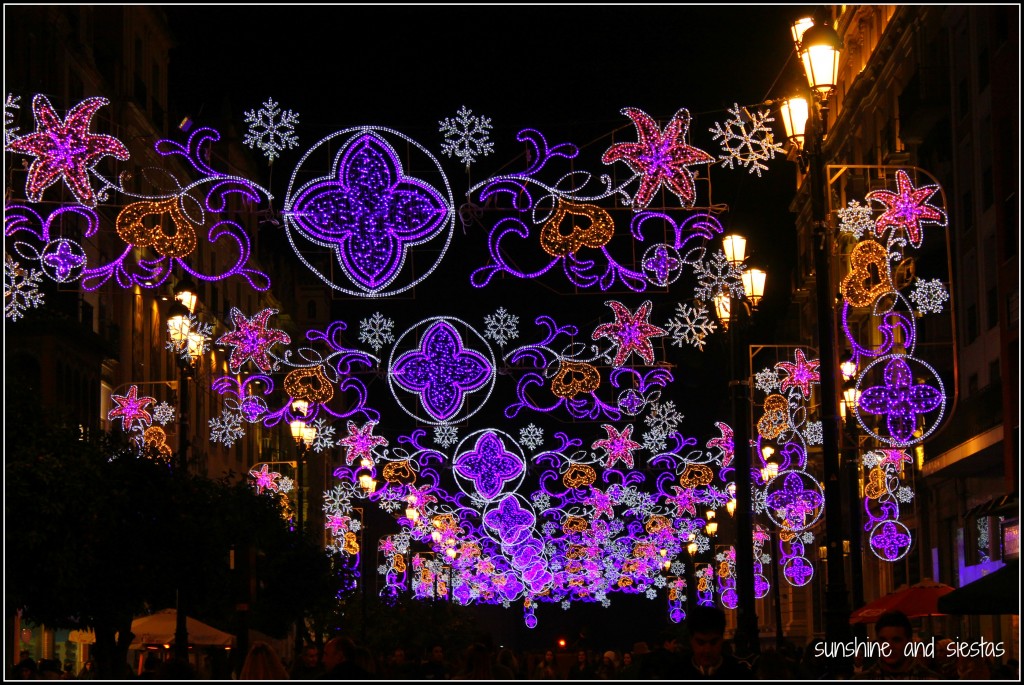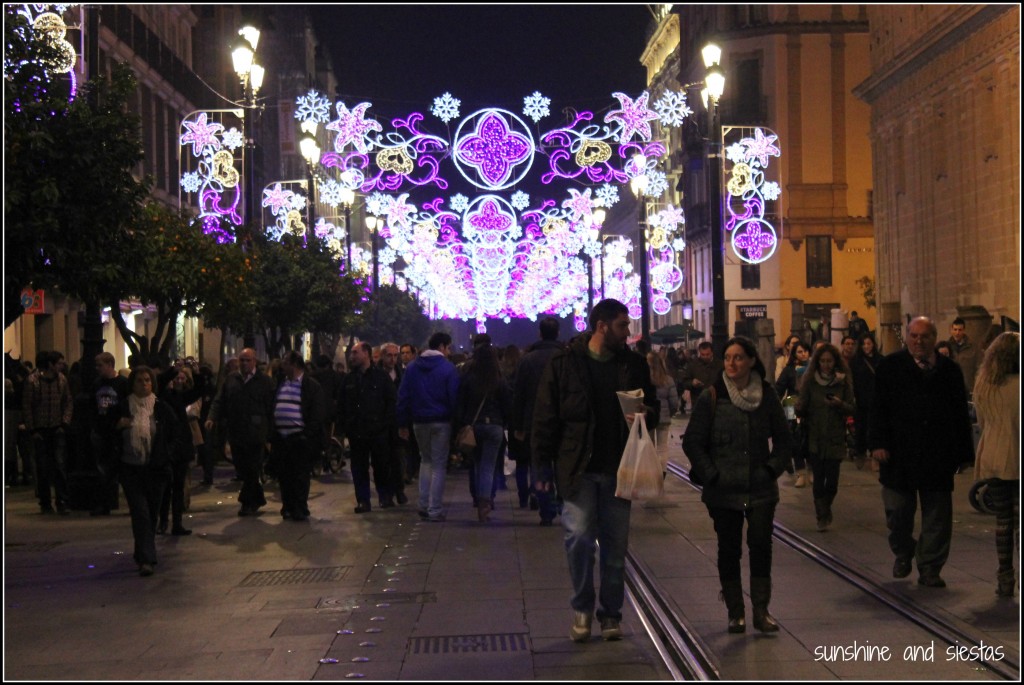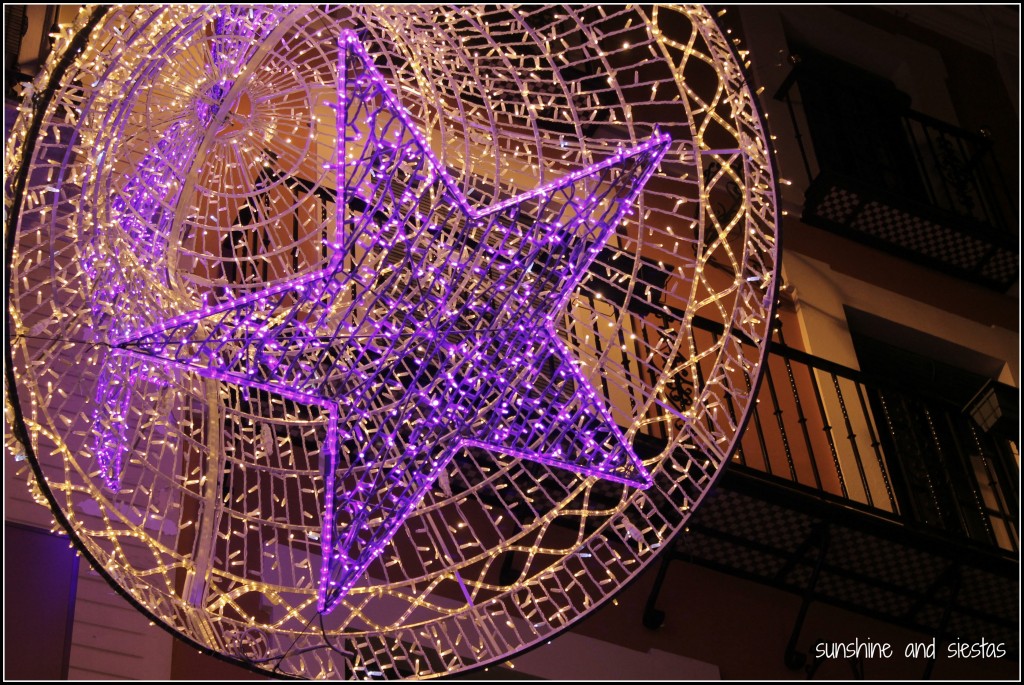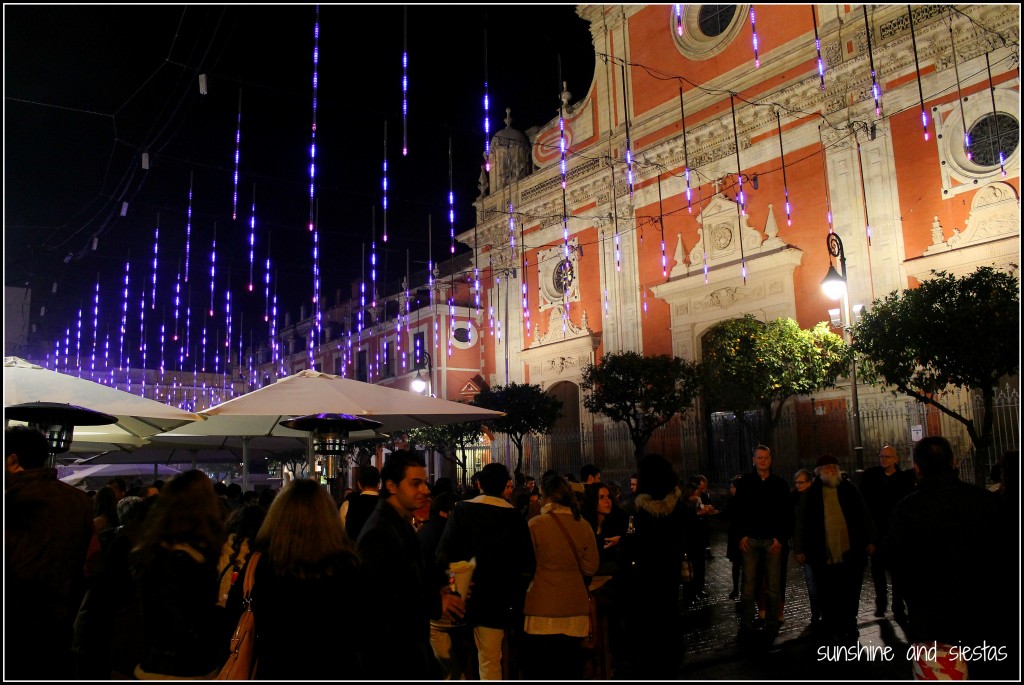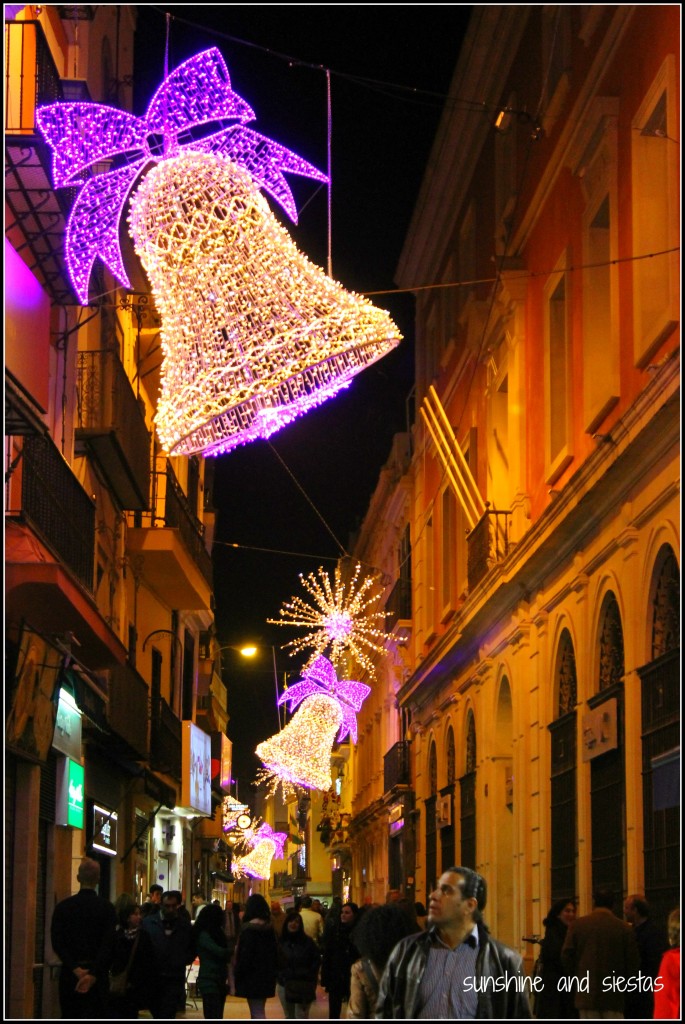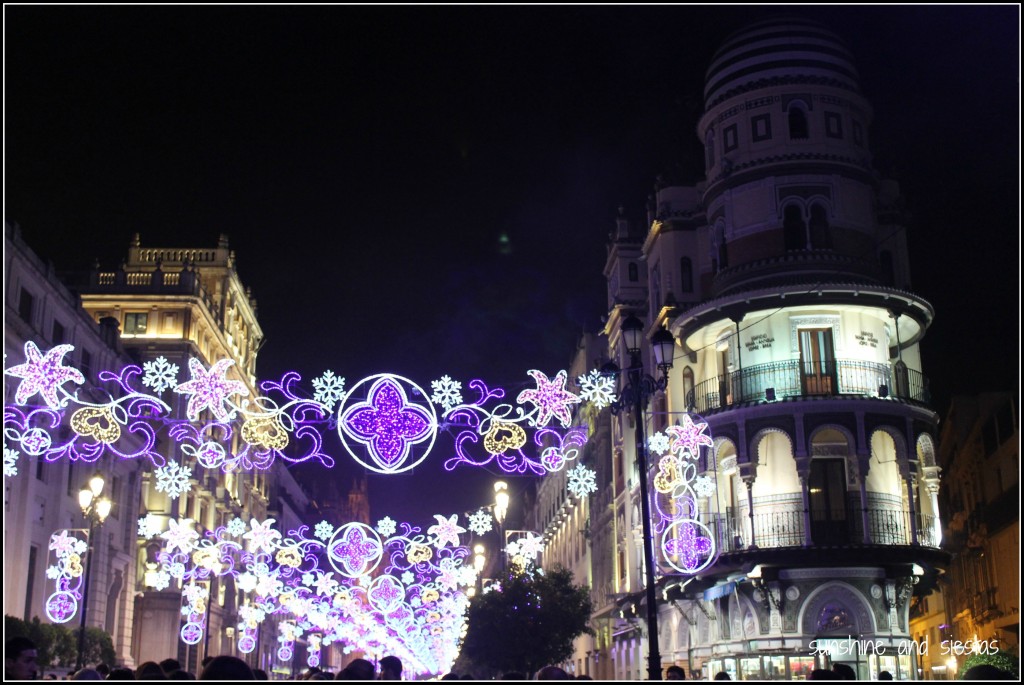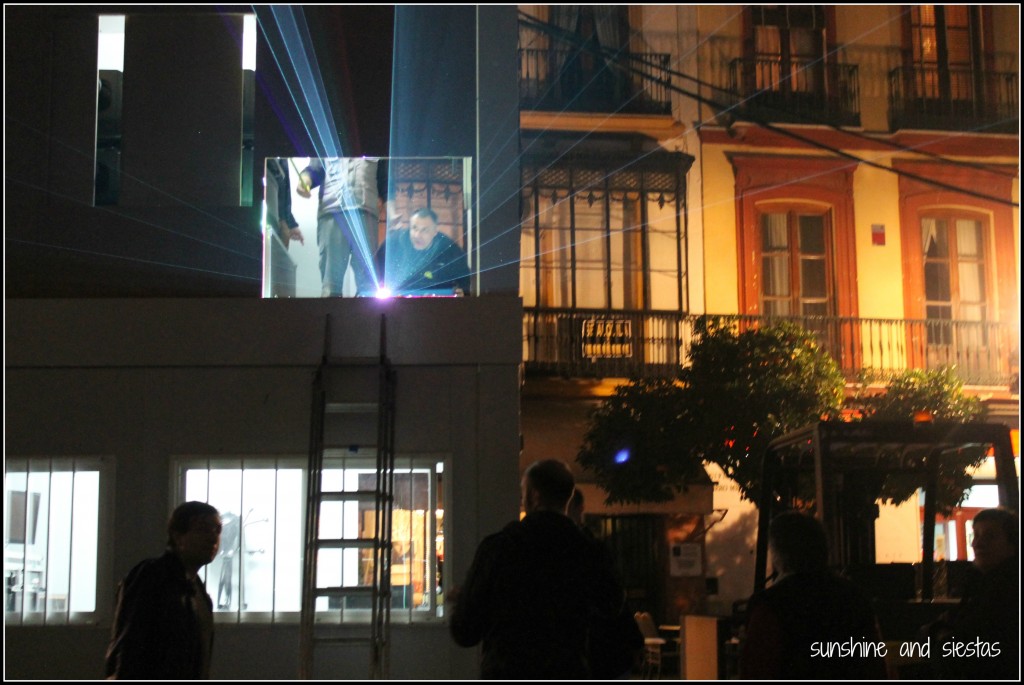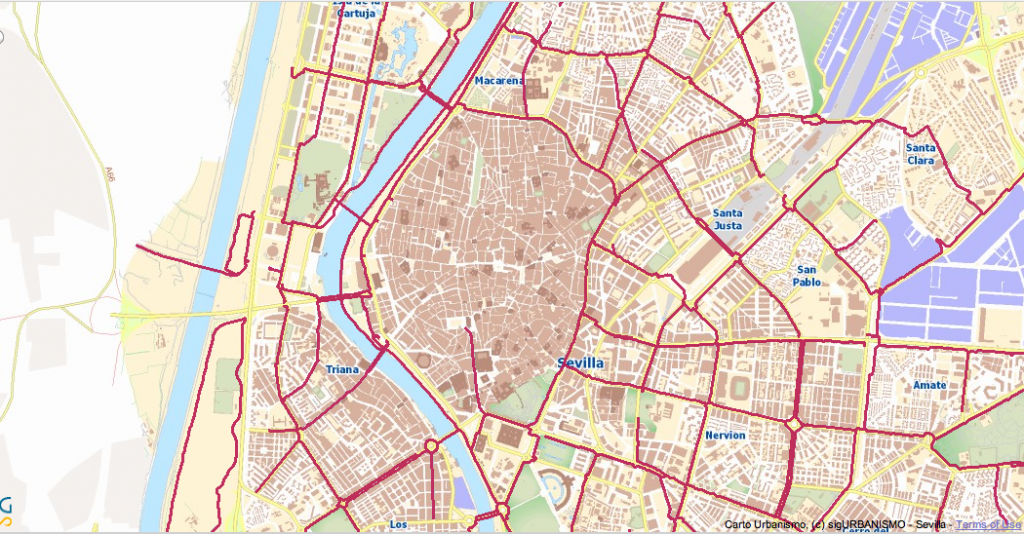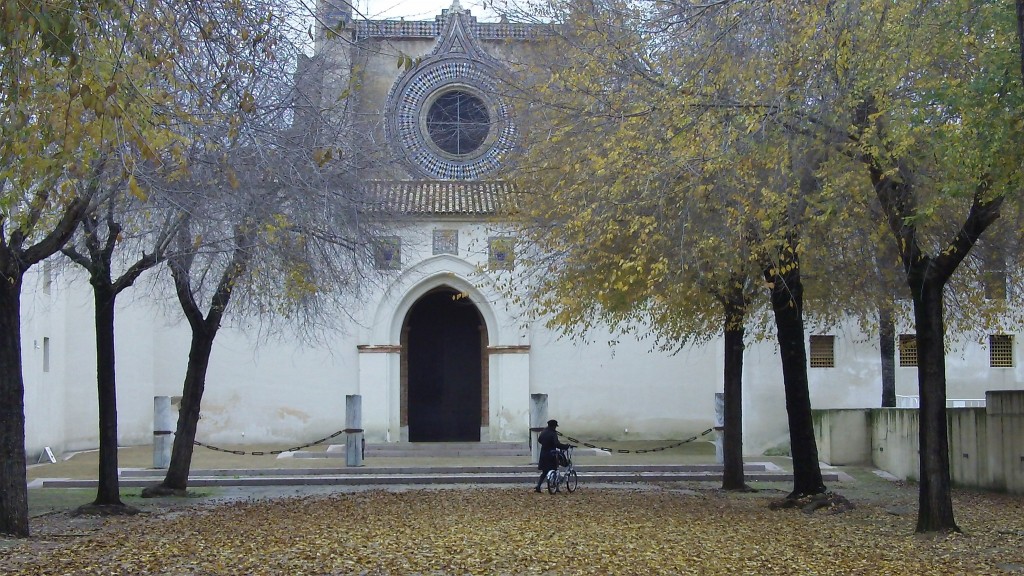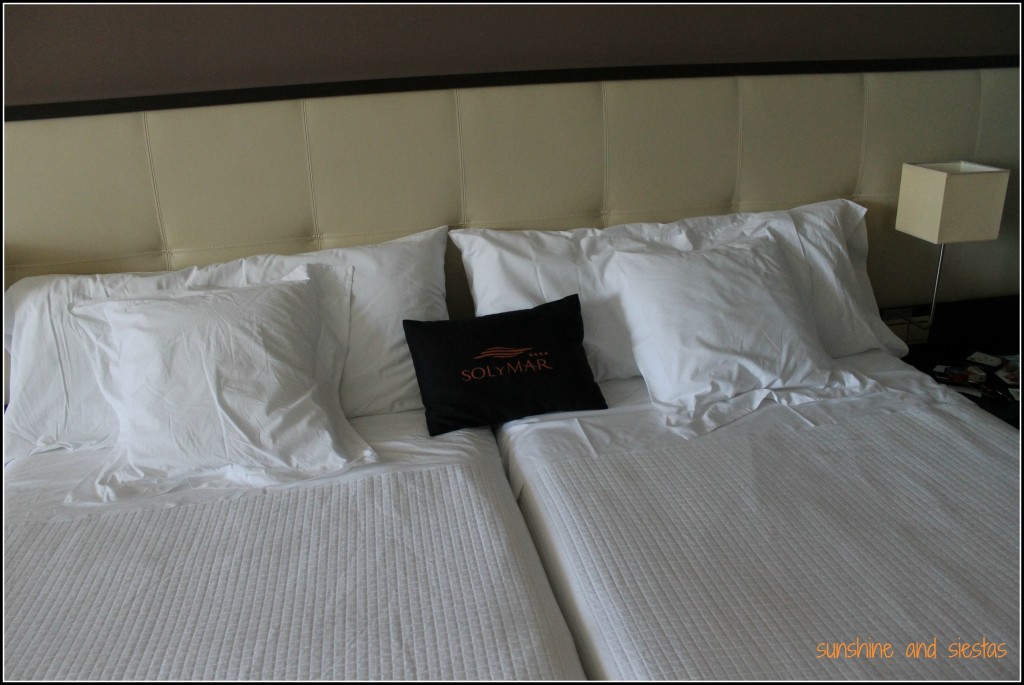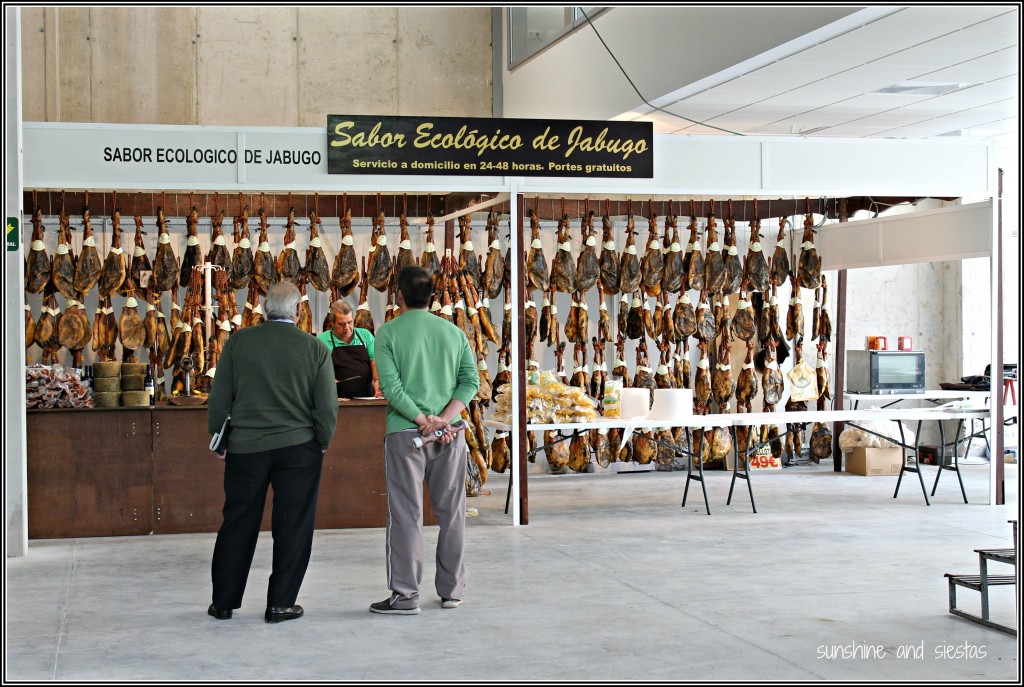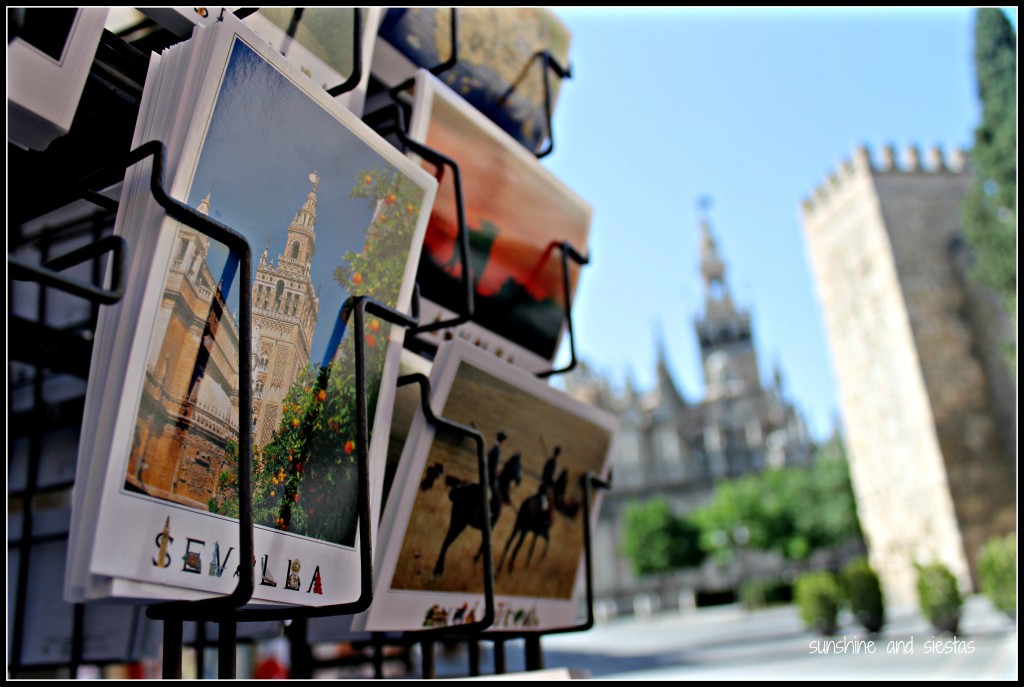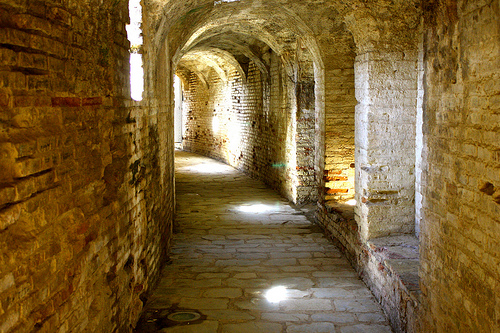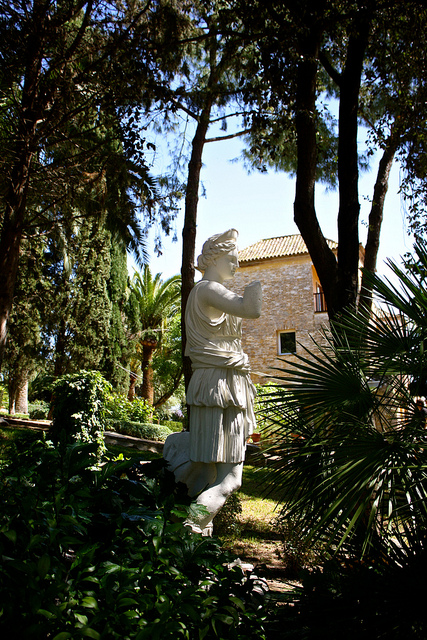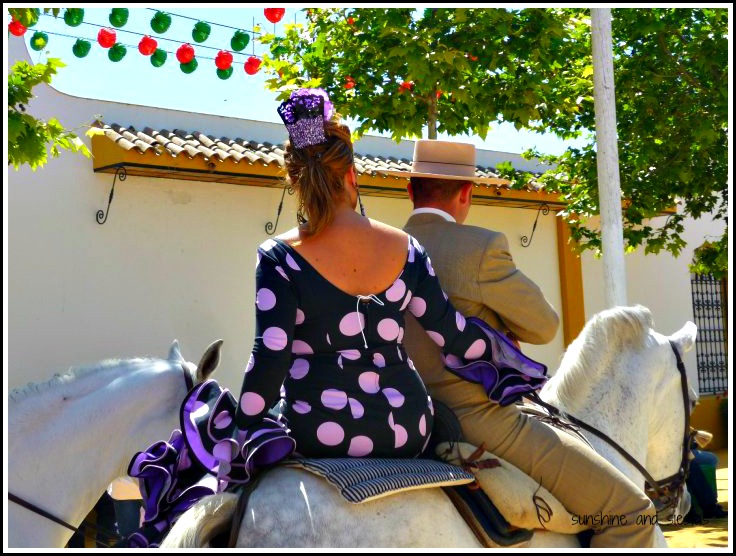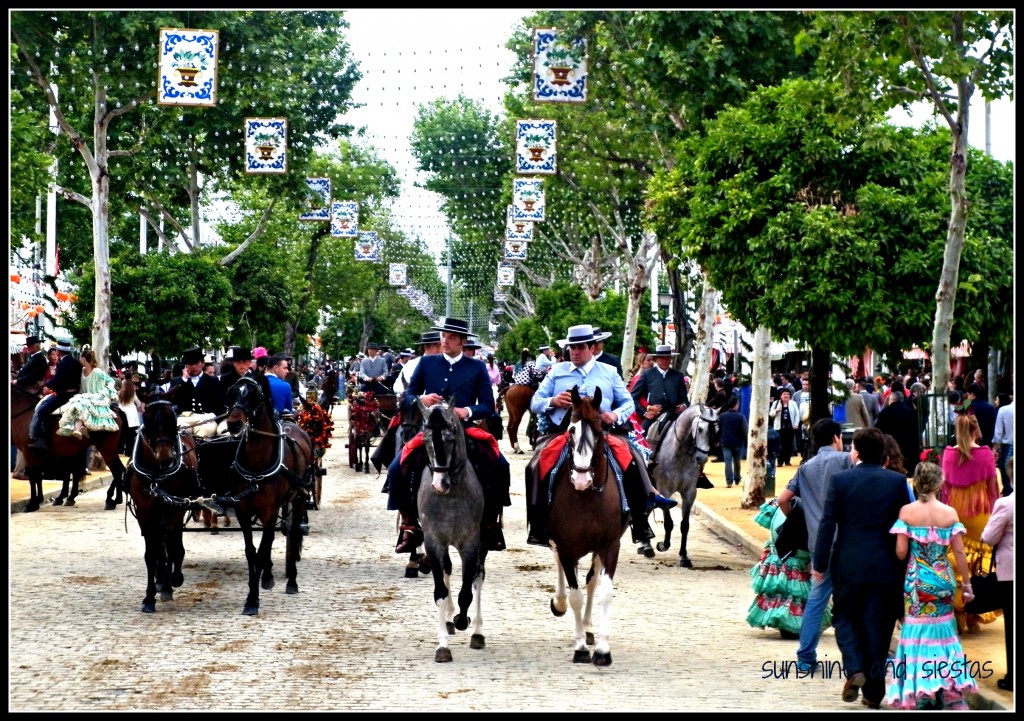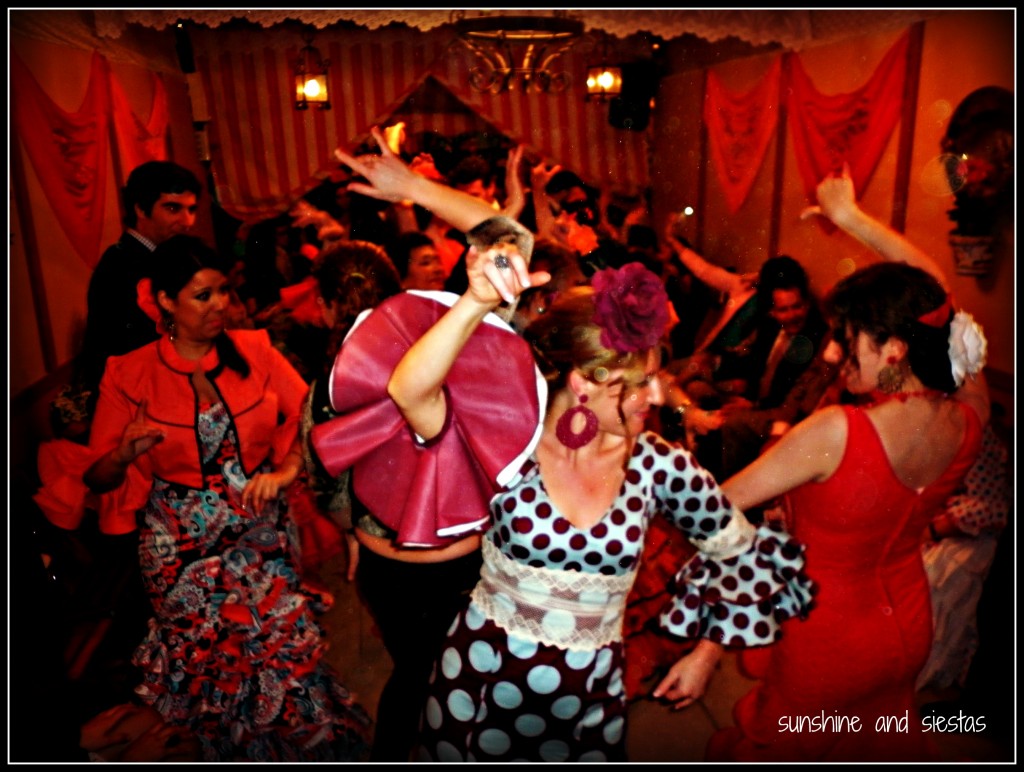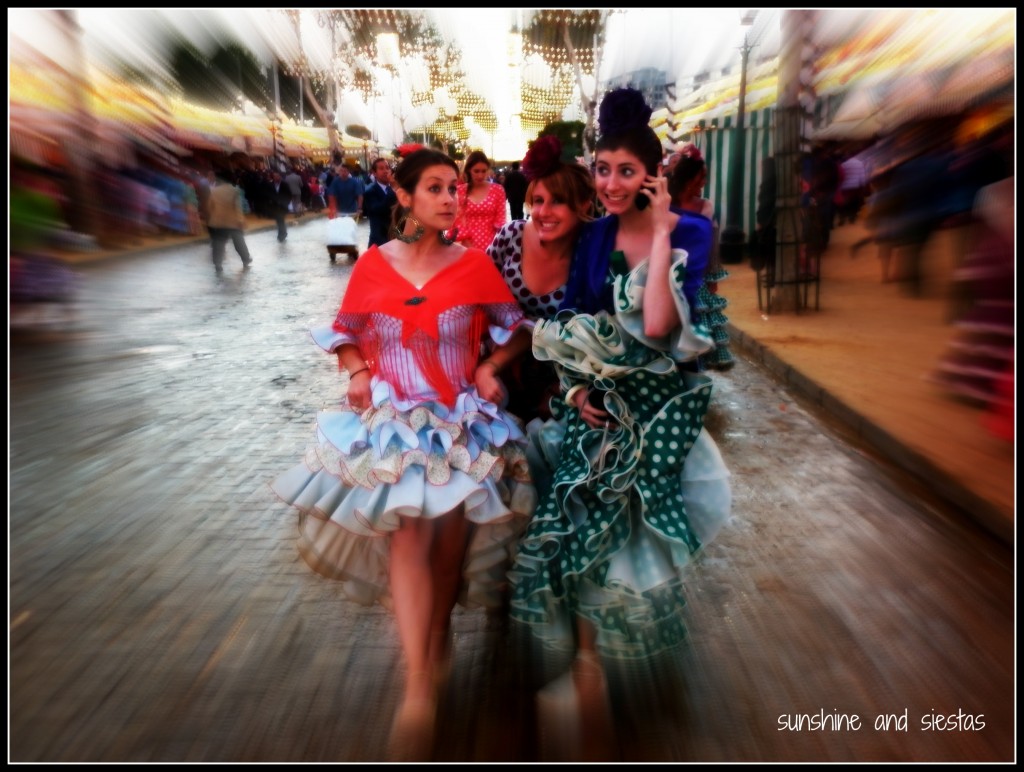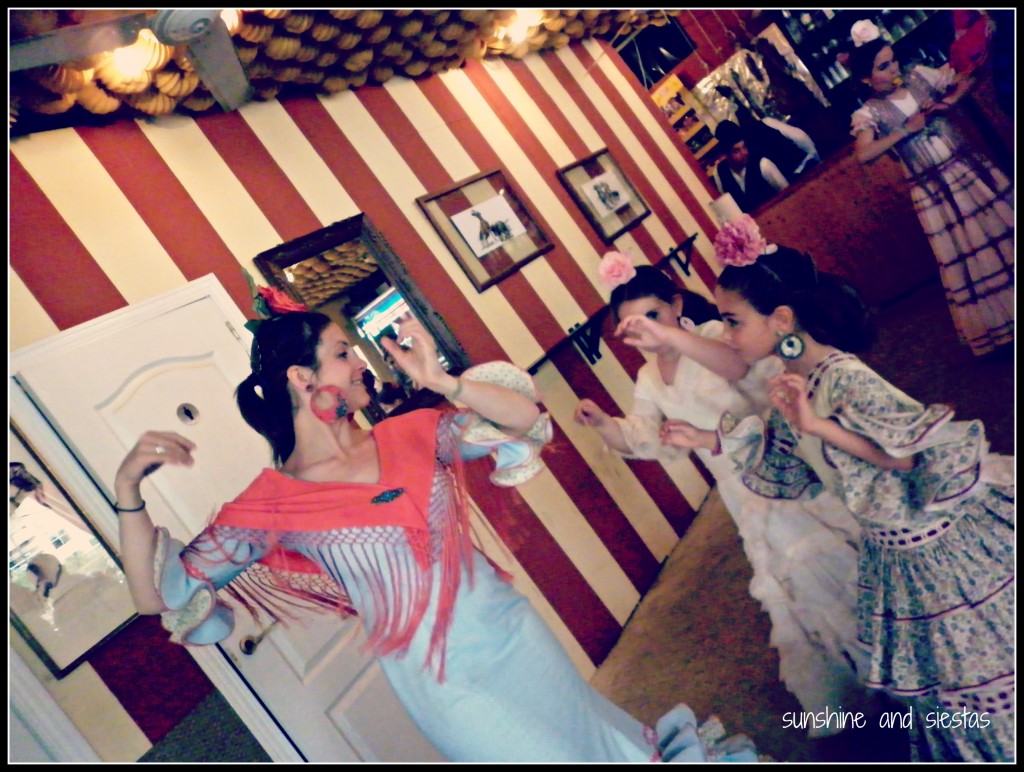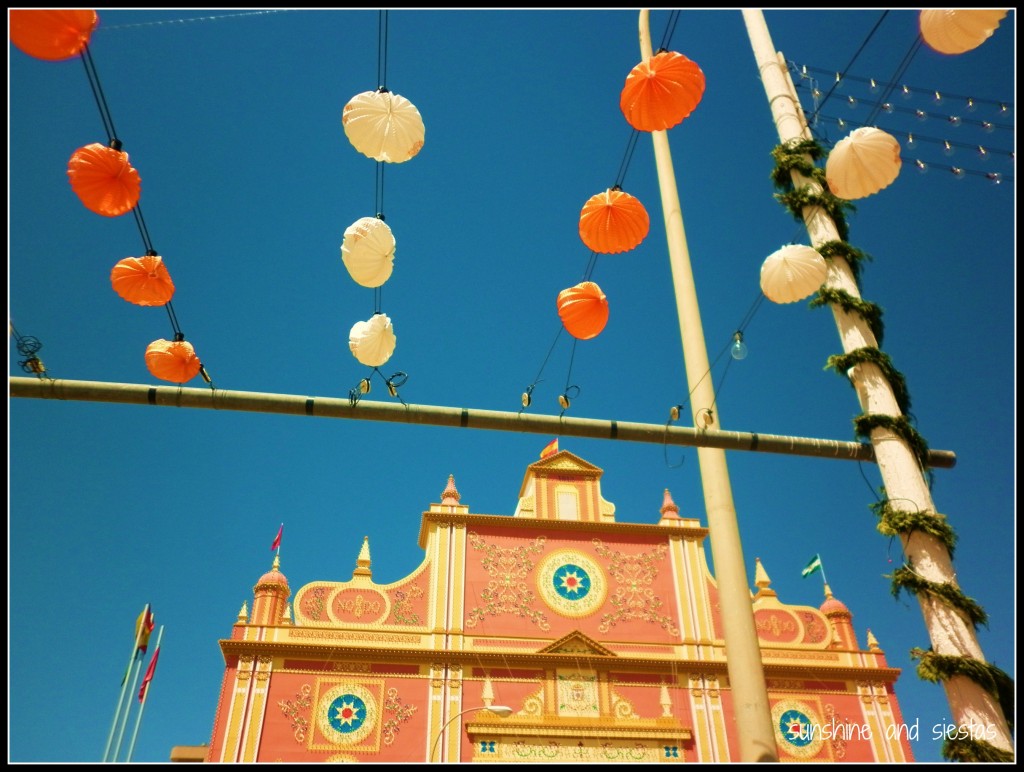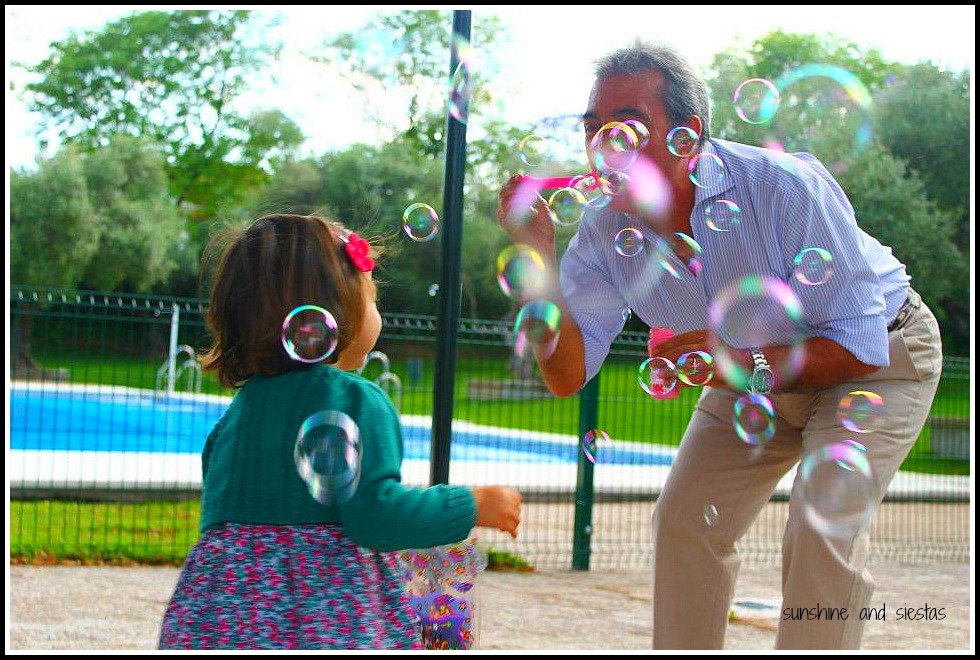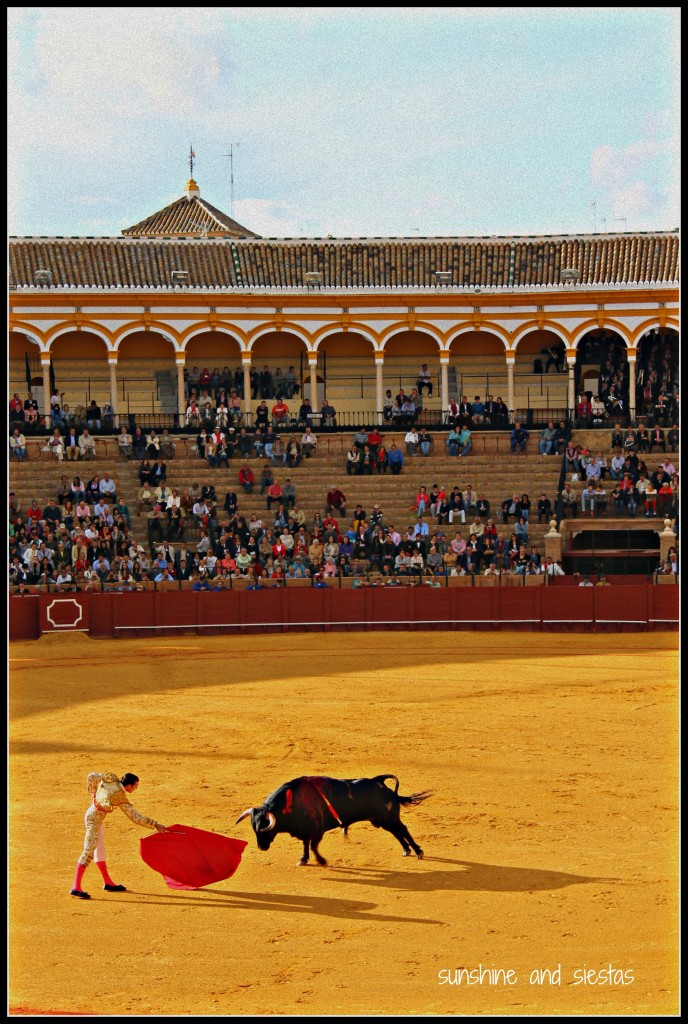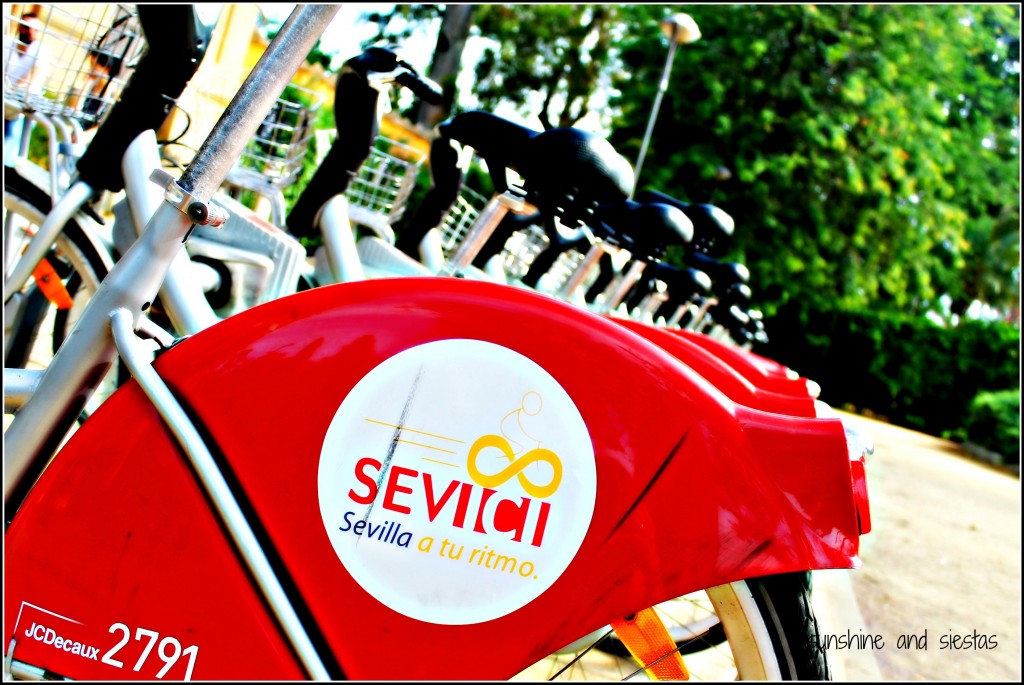Seville is the type of gal who doesn’t really need to get gussied up – she’s stunning enough on her own.
But La Hispalense (she even has a fancy name) loves to gets glitzy at Christmas time. As soon as the long December weekend beings, the city center is bursting with shoppers, a number of handicrafts markets pop up in Plaza Nueva and the Alameda, and police controls tighten up, thanks to the number of merry markers drinking at all hours of the day.
But as soon as the lights are turned on, I feel like Christmas really begins.
This year the city has used LED lights to dress up the city’s biggest thoroughfares – Constitución, San Fernando, around the Encarnación – and even in the outlying neighborhoods. Dios, even the Alcampo next door is decked out in holiday style.
Once again, the 3-D mapping on the eastern facade of city hall is operating. According to Fiona of Scribbler in Seville, the light and music show that’s projected onto the building won an award last year. This season’s show, El Espíritu de la Navidad, will be played from dusk until 11 or 12pm on the hour until the Epiphany Day.
How does your city celebrate Christmas? Where are your favorite lights in Seville located?
